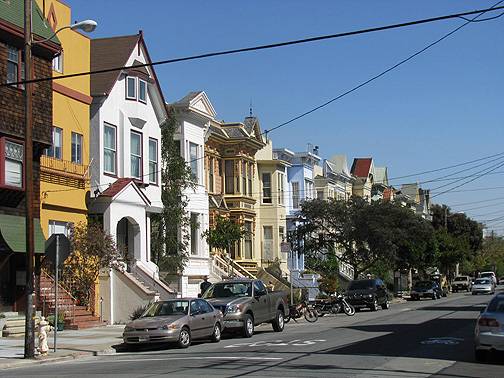Tract Housing on Page: Difference between revisions
(New page: Image:8-nside-page-rountree 4323.jpg '''North side of Page between Central and Lyon, 2008.''' ''Photo: Chris Carlsson'' CROSS CENTRAL AND CONTINUE ON PAGE. The most obvious change i...) |
m (Protected "Tract Housing on Page": primary source [edit=sysop:move=sysop]) |
||
| (One intermediate revision by the same user not shown) | |||
| Line 1: | Line 1: | ||
'''<font face = Papyrus> <font color = maroon> <font size = 4>Primary Source</font></font> </font>''' | |||
[[Image:8-nside-page-rountree 4323.jpg]] | [[Image:8-nside-page-rountree 4323.jpg]] | ||
Latest revision as of 20:18, 8 January 2009
Primary Source
North side of Page between Central and Lyon, 2008.
Photo: Chris Carlsson
CROSS CENTRAL AND CONTINUE ON PAGE. The most obvious change in the neighborhood after 1900 was the rapid development of "tract housing." It was common for a developer to buy up large parcels of land and build rows of flats and houses. They were then sold to families who could not otherwise afford to buy homes. Often the developers satisfied the consumer's penchant for individuality by varying facades, but the interiors shared the same floor plans and appointments. Innovators in this fledgling form of mass production were the Rountree Brothers. The structures on the north side of Page between Central and Lyon were built by them in 1890. They are among the earliest tract houses in the Haight.

